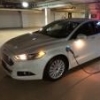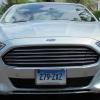-
Posts
1,054 -
Joined
-
Last visited
-
Days Won
37
About Hybridbear

-
 BLFarnsworth reacted to a post in a topic:
Battery capacity @ 30K miles horrible
BLFarnsworth reacted to a post in a topic:
Battery capacity @ 30K miles horrible
-
 bp22911@yahoo.com reacted to a post in a topic:
2014 Energi Titanium Popping noise
bp22911@yahoo.com reacted to a post in a topic:
2014 Energi Titanium Popping noise
-
 Hybridbear reacted to a post in a topic:
Battery Powered Electric Lawn Mower
Hybridbear reacted to a post in a topic:
Battery Powered Electric Lawn Mower
-
 Hybridbear reacted to a post in a topic:
new member: 2017 fusion energi titanium
Hybridbear reacted to a post in a topic:
new member: 2017 fusion energi titanium
-
 Hybridbear reacted to a post in a topic:
Variability in # of miles a full charge produces?
Hybridbear reacted to a post in a topic:
Variability in # of miles a full charge produces?
-
 Hybridbear reacted to a post in a topic:
Variability in # of miles a full charge produces?
Hybridbear reacted to a post in a topic:
Variability in # of miles a full charge produces?
-
 Hybridbear reacted to a post in a topic:
Variability in # of miles a full charge produces?
Hybridbear reacted to a post in a topic:
Variability in # of miles a full charge produces?
-
 Hybridbear reacted to a post in a topic:
2015 Energi Will Not Charge
Hybridbear reacted to a post in a topic:
2015 Energi Will Not Charge
-
I believe the fine print says that Ford is not responsible if the cellular provider decides to discontinue coverage.
-
Interesting that the dealer has a vanity plate on the Energi...
-
 Hybridbear reacted to a post in a topic:
Battery Vents and traction fans
Hybridbear reacted to a post in a topic:
Battery Vents and traction fans
-
 Hybridbear reacted to a post in a topic:
Battery Vents and traction fans
Hybridbear reacted to a post in a topic:
Battery Vents and traction fans
-
 Hybridbear reacted to a post in a topic:
1 year update
Hybridbear reacted to a post in a topic:
1 year update
-
 Hybridbear reacted to a post in a topic:
1 year update
Hybridbear reacted to a post in a topic:
1 year update
-

Traded my 2013 Energi. I hope new owner appreciates it.
Hybridbear replied to howardbc's topic in 2013 Fusion Energi
That's awesome! I am strongly leaning toward a Model S as my next car, but I'm inclined to try to wait right now since I expect the AP 2.0 hardware to be released soon. I don't want to end up in a spot of buying a Model S this winter just to have them introduce the AP 2.0 hardware a couple weeks/months later. -
That's possible. We have found a few 2G dead zones around the Twin Cities where MFM won't work at all. However, I have my parents' C-Max Energi in my MFM account, in addition to my car. They often will just text me to update their go times for them, instead of them logging into MFM to do it... I wasn't getting text messages for their car either & the bunch that came were for all the vehicles. They live on the other side of the city from me.
-
I stopped getting my text message alerts for a few days & then received all of them back-to-back on the 29th.
-
Nice! Is the C-Max Energi your wife's?
-

Traded my 2013 Energi. I hope new owner appreciates it.
Hybridbear replied to howardbc's topic in 2013 Fusion Energi
Congrats on your new EV! What EV did you buy?? -
When the car is in EV Later you are still counting EV miles because the ICE doesn't run 100% of the time. That is where the EV miles come from. It's just a count of how many miles were traveled with the ICE off. The regen miles are an estimate of how much energy was recovered through regen braking. Instead of displaying that in a unit of stored energy (kWh for example), Ford chose to convert that number to miles. If you did not have regen braking you would have wasted energy equivalent to about 1.5 miles of driving in this scenario (likely about 0.3 kWh).
-
This is why I'm not a big fan of Tesla telling owners to charge to 80% or 90% every night. If I had a Tesla, I would likely choose to charge only to 50-60% on most days based on this info about capacity loss due to calendar fade to keep the average SOC as low as possible, while not going too low where cell voltage variation spikes. Calendar fade degradation should be a concern to anyone buying a used EV. It is a concern for me as I consider a used Model S as a possible replacement for the Focus Electric when its lease ends in under 6 weeks.
- 27 replies
-
- HVB
- Degradation
-
(and 1 more)
Tagged with:
-
 flyingcheesehead reacted to a post in a topic:
2017 Volt Premium vs. FFE Platinum
flyingcheesehead reacted to a post in a topic:
2017 Volt Premium vs. FFE Platinum
-
 larryh reacted to a post in a topic:
OBD II Data for HVB
larryh reacted to a post in a topic:
OBD II Data for HVB
-

Question for those with high mileage Energi's
Hybridbear replied to Platinum15Ti's topic in General Discussion
My parents' 2013 C-Max Energi is now 3 years old and has about 18,000 EV miles out of about 20,000 odometer miles. They are down about 0.5 kWh based on my limited testing. This is about 2-3 miles of EV range. Check out larryh's posts here for a highly scientific analysis of this. -
 jeff_h reacted to a post in a topic:
2017 Volt Premium vs. FFE Platinum
jeff_h reacted to a post in a topic:
2017 Volt Premium vs. FFE Platinum
-
This was my thought as well as soon as I saw the news. I don't believe that they made any impactful changes to the powertrain. If the C-Max Energi MPGe & EV range also increase then I'll believe that powertrain changes were made. Until then, I just think that they decided to certify the Fusion Energi separate from the C-Max Energi & use it as marketing, faking an improvement. I don't believe them. I believe that it's just twisted marketing language that is untrue.
-
I don't know any BEV or PHEV that allows charging anywhere near 1 C other than via DC fast charging. The Focus Electric, for example, has a 23 kWh HVB and charges at around 6.6 kW. This is 0.29 C. The second-generation Volt has an 18.4 kWh HVB that only charges at 3.6 kW. That is less than 0.2 C. Fast charging a Nissan Leaf at 50 kW with its 30 kWh battery is 1.67 C. Tesla has been slowly increasing their Supercharger power levels, with some Supercharger locations being able to deliver up to 135 kW of power. Charging a 70 kWh Model S at 135 kW is 1.93 C, charging a 90 kWh Model S at 135 kW is 1.5 C. The Model S can charge via L2 at a maximum rate of approximately 19 kW (80 amps * 240 V), which is a very low C rate for the size of their HVBs. It's interesting that they say that 1 C is the optimal charging rate. When driving the Energi can charge at a maximum rate of 35 kW which is about 5 C. When driving in the mountains we saw sustained charging rates around 15 kW when descending grades. That approximate 2 C charging rate caused very rapid increases in HVB temperature. The Focus Electric can charge the HVB at up to 60 kW when driving, although I've never seen the charging from regen exceed around 40 kW in my driving. This is a great idea. I've often wished that instead of the MFM value charge profile starting at the same time each morning that it would instead start at whatever time is needed in order to be done charging shortly before the Go Time. I've tried to limit the time at a full charge by delaying the start of charging until 3:00 am as well. However, some days the Focus Electric only needs 30-50 minutes to charge & other days it needs 3 hours. I'd like to tell it to not start charging until closer to 5:00 am, but then the car would think that it couldn't complete charging before my Go Time on some days so it would charge earlier. So, my compromise is 3:00 am every day. Larry & I are both in MN & the HVB will routinely exceed 90 F and even 100 F even in our relatively cool weather this far north. 25%, wow! The Focus Electric goes down to about 7% absolute SOC at the very bottom end and charges up to about 89-91% absolute SOC when fully charged. In the winter I get down below 15% absolute SOC at least once per week, if not multiple days per week. In the summer I rarely go below 25% absolute SOC, I rarely go below about 35% absolute SOC in the summer. I have seen measurable capacity loss in the Focus Electric in the 2+ years and 20,000 miles that I've driven it. The Fusion Energi rarely got that low, probably less than 12 times per year, and those days were usually grouped together when taking it on long trips.
-
Have you considered a Model S or X? That would be my choice. I would pick the Volt over the Energi. The current Fusion Energi powertrain is old, dating back to 2013. Thus, its tech lags way behind. You will find that it doesn't have that much power in EV mode either, only 65 kW maximum. The Volt is a far better car for driving EV only. However, the Fusion does have more space. I guess you'd have to decide how much you'd need the space to know if the Volt's smaller design would work. However, a Model S would fix all of those issues & includes free long-distance travel via Superchargers, which makes road trips a pleasure. I'm still leaning toward buying a used Model S when my Focus Electric lease ends in two months.


